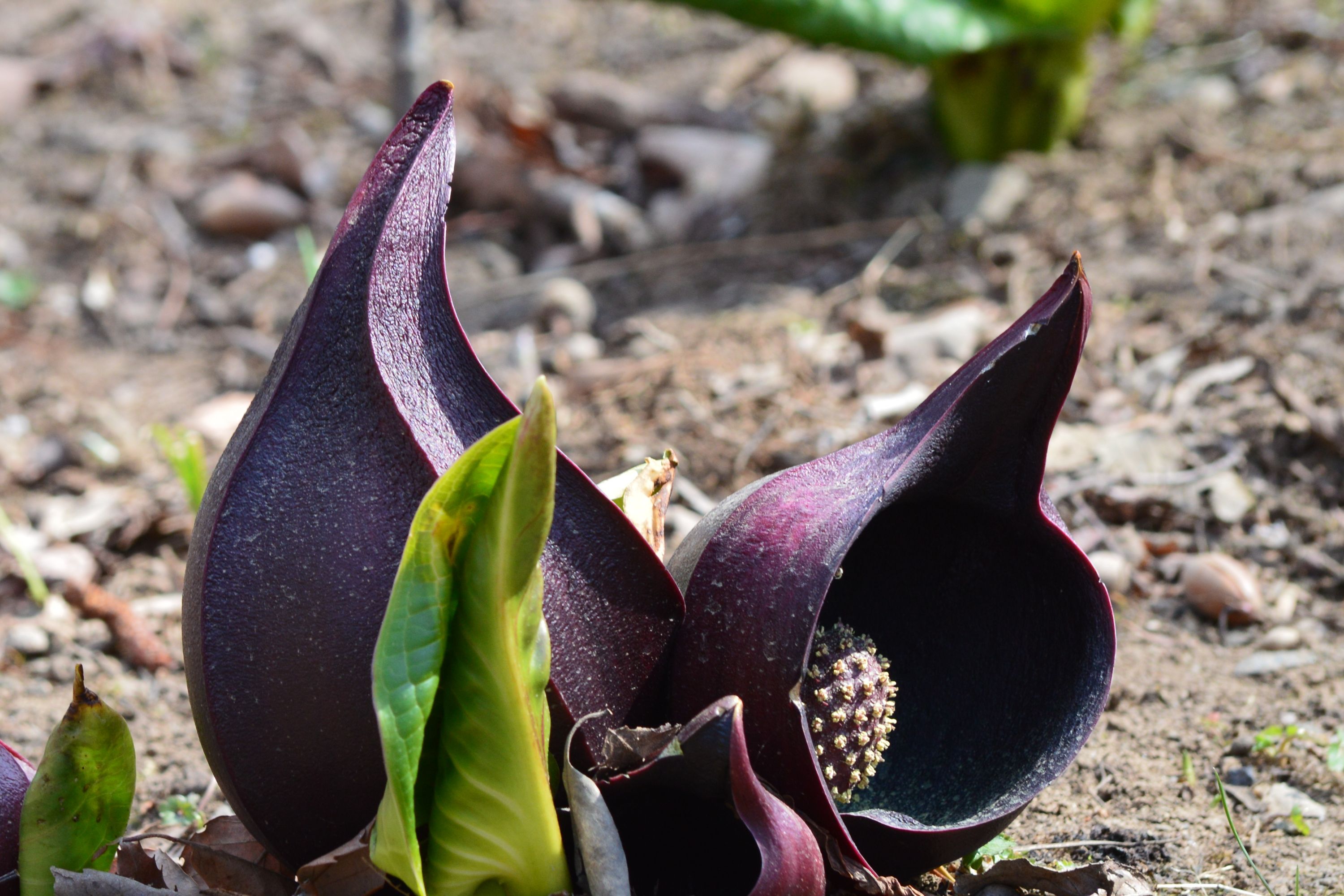Eastern skunk cabbage
(Symplocarpus foetidus)

Description
Symplocarpus foetidus, commonly known as skunk cabbage or eastern skunk cabbage (also swamp cabbage, clumpfoot cabbage, or meadow cabbage, foetid pothos or polecat weed), is a low growing plant that grows in wetlands and moist hill slopes of eastern North America. Bruised leaves present an odor reminiscent of skunk. Eastern skunk cabbage has large leaves, each 40–55 cm (16–22 in) long and 30–40 cm (12–16 in) wide. It flowers early in the spring when only the flowers are visible above the mud. The stems remain buried below the surface of the soil with the leaves emerging later. The flowers are produced on a 5–10 cm (2–4 in) long spadix contained within a spathe, 10–15 cm (4–6 in) tall and mottled purple in colour. The rhizome is often 30 cm (0.98 ft) thick. The eastern skunk cabbage is native to eastern North America, from Nova Scotia and southern Quebec west to Minnesota, and south to North Carolina and Tennessee. It is protected as endangered in Tennessee. Its habitats include stream banks, wet woodlands, and wet areas such as swamps. Breaking or tearing a leaf produces a pungent but harmless odor, the source of the plant's common name; it is also foul smelling when it blooms. The plant is not poisonous to the touch. The foul odor attracts its pollinators: scavenging flies, stoneflies, and bees. The odor in the leaves may also serve to discourage large animals from disturbing or damaging this plant, which grows in soft wetland soils. Eastern skunk cabbage is notable for its ability to generate temperatures of up to 15–35 °C (59–95 °F) above air temperature by cyanide resistant cellular respiration in order to melt its way through frozen ground, placing it among a small group of thermogenic plants. Even though it flowers while there is still snow and ice on the ground, it is successfully pollinated by early insects that also emerge at this time. Some studies suggest that beyond allowing the plant to grow in icy soil, the heat it produces may help to spread its odor in the air. Carrion-feeding insects that are attracted by the scent may be doubly encouraged to enter the spathe because it is warmer than the surrounding air, fueling pollination. Eastern skunk cabbage has contractile roots which contract after growing into the earth.
Taxonomic tree:







